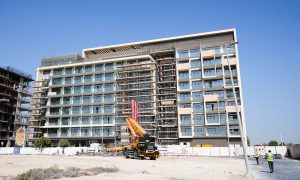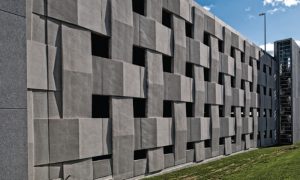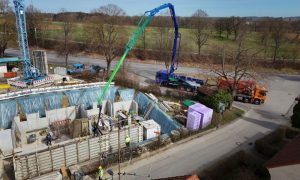The Challenges of Disconnected Technology
Trimble’s Paul Wallett examines whether disconnected technology is hindering project communication within the design and construction processes

In the fast-paced realm of project management, where technology and perspectives are in constant flux, effective communication stands out as the linchpin for achieving unparalleled success. The dynamism inherent in project management is, however, often impeded by disconnected technologies, posing challenges that can undermine efficiency, productivity, information flow, and collaboration.
In light of this, companies involved in the field make constant efforts to include effective communication tools to maximise the success of their projects. These top communication tools are crafted with the objective of facilitating communication, boosting teamwork, and offering a centralised platform for managing project-related data, and strive to create a more cohesive, efficient, and successful project environment.
Challenges in the field of project management
Effective communication has emerged as an integral component that holds together the complicated web of procedures. Nevertheless, disconnected technology has frequently served as a major cause for concern within the industry, creating numerous challenges as well as inefficiencies in communication, collaboration, security, data consistency, etc.
The siloed characteristic of tools and platforms constitutes one of the foremost challenges encountered by construction teams. There might be separate software systems for construction teams and design teams, which certainly leads to fragmented flow of information. This division can cause miscommunication, errors in interpretation, and a lack of real-time cooperation, which can ultimately impact the project’s budget and schedule.
In the field of design, engineers and architects create complex blueprints, which function as a guide for them throughout the construction processes. Due to technology differences, it might become extremely imperative to carry out expensive modifications and rework when these plans and strategies are not effectively communicated with the construction teams. A comprehensive strategy to technology integration must be implemented to bridge this gap while ensuring that the construction and design teams operate from the same digital platform.
In the construction sector, miscommunications can lead to expensive mistakes, significant delays in projects, and other discrepancies. Numerous solution providers are currently in pursuit to address and help stakeholders resolve these challenges. For instance, connected construction technologies, have been assisting companies in enhancing communication throughout the design and construction phases. This technology guarantees that all stakeholders are on the same page by facilitating real-time data exchange, collaboration, and project management.

Museum of the Future example
As an example, consider a scenario in which state-of-the-art technologies were not deployed in building the Museum of the Future – an architectural wonder that showcases various technical breakthroughs and advancements. The lack of collaborative platforms and integrated project management systems would cause communication failures that affect the efficacy of construction.
Furthermore, the energy efficiency and immersive visitor experience of the Museum would be hampered due to the lack of integration of smart technology, such as IoT devices. Essentially, the precision, efficiency, and cutting-edge elements essential to the Museum of the Future’s visionary design would be compromised due to the absence of modern construction technology.
Today’s construction projects with complex designs involves processes, including design and detailing, estimating, project management, steel fabrication, field technology, and financial/back-office management. The fragmented nature of these processes can hinder productivity and jeopardise a project’s success. The solution to this challenge is employing an integrated platform that streamlines the modelling, detailing, and design processes, guaranteeing accuracy and consistency throughout the whole project lifecycle.
Solutions for bridging the gaps through cutting-edge construction technology
Coordination is improved by centralising task management, progress monitoring, and communication using an integrated project management system. When this system is integrated with design and other estimating tools, it offers a unified perspective, which allows project managers to make well-informed decisions.
Real-time insights can be obtained through the integration of project data with finance management systems. Financial operations are streamlined, and fiscal responsibility is ensured through automated invoicing and billing processes that are linked to project milestones.
Delays in the critical phase of steel manufacture might have an extended impact throughout the entire construction endeavour. Schedules can be synchronised by integrating fabrication equipment with project management systems. The automated quality control procedures within this integration improve productivity and lower errors throughout the fabrication process.

Field teams, who work independently, constitute the foundation of project implementation. Providing them with access to mobile technology integrated into project management tools guarantees real-time updates.
Construction technology companies are revolutionising project management by merging these elements into a cohesive digital environment. With this integrated approach, challenges to communication are minimised, cooperation is improved, and provide a holistic view of the project from start to finish. From concept to delivery, it is a transformational method that guarantees success, accuracy, and efficiency.























